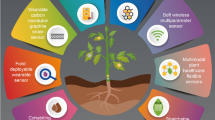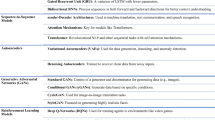Abstract
Wheat classes and varieties are determined by trained professionals in the laboratory. Several approaches have been made using machine vision technology for nondestructive and online identification of wheat classes, but the performance has been poor and inconsistent. An infrared thermal imaging system was developed to identify eight western Canadian wheat classes. Samples of 20 g each of wheat at 14% moisture content (wet basis) spread in a 100 × 100 mm monolayer were heated by a plate heater (maintained at 90 °C) placed at a distance of 10 mm from the grain layer. The surface temperatures of the top surface of the grain bulk were imaged before heating, after heating for 180 s, and after cooling for 30 s using an infrared thermal camera (n = 100). Temperature rise (after heating) and drop (after cooling) were significantly different for wheat classes (α = 0.05). The temperature rise ranged from 14.94 (Canada Western Red Spring) to 17.80 °C (Canada Prairie Spring Red), and the drop ranged from 3.67 (Canada Western Extra Strong) to 4.42 °C (Canada Prairie Spring Red) after heating for 180 s and cooling for 30 s, respectively. The rate of heating and cooling was negatively correlated with protein content of wheat (r = −0.63 for heating, r = −0.65 for cooling) and true density (r = −0.67 for heating, r = −0.71 for cooling), and positively correlated with grain hardness (r = +0.41 for heating, r = +0.53 for cooling). Overall classification accuracies of an eight-class model, red-class model (four classes), white-class model (four classes), and pairwise (two-class model) comparisons using a quadratic discriminant method were 76%, 87%, 79%, and 95%, and 64%, 87%, 77%, and 91% using bootstrap and leave-one-out validation methods, respectively. There were several misclassifications in the four and eight-class models. Thermal imaging approach may have potential to develop classification methods for two classes, which are similar and difficult to distinguish by visual inspection; however, the effect of growing season, defects, and kernel size must be considered while developing such methods. The temperature rise after heating and drop after cooling were tested for Canada Western Red Spring wheat at three moisture levels (11%, 14%, and 17% wet basis; n = 20). There were no significant differences (α = 0.05) in the mean temperature rise and temperature drop between 11%, 14%, and 17% moisture samples.


Similar content being viewed by others
References
Balasubramanian, S., Panigrahi, S., Logue, C. M., Marchello, M., Doetkott, C., Gu, H., et al. (2004). Spoilage identification of beef using an electronic nose system. Transactions of the ASAE, 47, 1626–33.
Canadian Grain Commission, (2005). Available at: http://www.grainscanada.gc.ca/grl/variety_id/variety_id-e.htm. Accessed on August 8, 2006.
Dubey, B. P., Bhagwat, S. G., Shouche, S. P., & Sainis, J. K. (2006). Potential of artificial neural networks in varietal identification using morphometry of wheat grains. Biosystems Engineering, 95, 61–67. doi:10.1016/j.biosystemseng.2006.06.001.
Jayas, D. S., Paliwal, J., & Visen, N. S. (2000). Multi-layer neural networks for image analysis of agricultural products. Journal of Agricultural Engineering Research, 77, 119–28. doi:10.1006/jaer.2000.0559.
Lookhart, G. L., Marchylo, B. A., Mellish, V. J., Khan, K., Lowe, D. B., & Seguin, L. (1995). Wheat identification in North America. In C.W. Wrigley (Ed.), Identification of food grain varieties (pp. 91–130). St. Paul, MN: American Association of Cereal Chemists.
Luo, X., Jayas, D. S., & Symons, S. J. (1999). Comparison of statistical and neural network methods for classifying cereal grains using machine vision. Transactions of the ASAE, 42, 413–419.
Majumdar, S., & Jayas, D. S. (2000a). Classification of cereal grains using machine vision: I. Morphology models. Transactions of the ASAE, 43, 1669–1675.
Majumdar, S., & Jayas, D. S. (2000b). Classification of cereal grains using machine vision: IV. Combined morphology, color and texture models. Transactions of the ASAE, 43, 1689–1694.
Mark, Y., Skylas, D. J., Willows, R., Connolly, A., Cordwell, S. J., Wrigley, C. W., et al. (2006). A proteomic approach to the identification and characterization of protein composition in wheat germ. Functional & Integrative Genomics, 6, 322–337. doi:10.1007/s10142-005-0018-8.
Mohsenin, N. N. (1980). Thermal Properties of Foods and Agricultural Materials. New York, NY: Gordon and Beach Science.
Myers, D. G., & Edsall, K. J. (1989). The application of image processing techniques to the identification of Australian wheat varieties. Plant Varieties & Seeds, 2, 109–116.
Neuman, M., Sapirstein, H. D., Shwedyk, E., & Bushuk, W. (1987). Discrimination of wheat class and variety by digital image analysis of whole grain samples. Journal of Cereal Science, 6, 125–132.
Neuman, M. R., Sapirstein, H. D., Shwedyk, E., & Bushuk, W. (1989). Wheat grain color analysis by digital image processing. II. Wheat class discrimination. Journal of Cereal Science, 10, 183–188.
Panigrahi, S., Balasubramanian, S., Gu, H., Logue, C., & Marchello, M. (2006). Neural-network integrated electronic nose system for identification of spoiled beef. LWT Food and Science Technology, 39, 135–145. doi:10.1016/j.lwt.2005.01.002.
Singh, R. P., & Heldman, D. R. (1993). Introduction to Food Engineering (2nd ed.). San Diego, CA: Academic.
Sun, S. (2002). Effects of micronization on the physicochemical and rheological properties of wheat varieties. M.Sc. thesis. Winnipeg, MB, Canada: Department of Human Nutritional Sciences, University of Manitoba.
Symons, S. J., & Fulcher, R. G. (1988a). Determination of wheat kernel morphological variation by digital image analysis: I. Variations in eastern Canadian milling quality wheats. Journal of Cereal Science, 8, 211–218.
Symons, S. J., & Fulcher, R. G. (1988b). Determination of wheat kernel morphological variation by digital image analysis: II. Variations in cultivars of soft white winter wheats. Journal of Cereal Science, 8, 219–229.
Utku, H., & Koksel, H. (1998). Use of statistical filters in the classification of wheats by image analysis. Journal of Food Engineering, 36, 385–394. doi:10.1016/S0260-8774(98)00072-7.
Vanlinden, V., Vereycken, R., Bravo, C., Ramon, H., & Baerdemaeker, J. D. (2003). Detection technique for tomato bruise damage by thermal imaging. In Proceedings of Post-harvest Unlimited (pp. 389–394). Leuven, Belgium: International Society for Horticultural Science.
Varith, J., Hyde, G. M., Baritelle, A. L., Fellman, J. K., & Sattabongkot, T. (2003). Non contact bruise detection in apples by thermal imaging. Innovative Food and Science Emergency Technology, 4, 211–218. doi:10.1016/S1466-8564(03)00021-3.
Visen, N. S., Jayas, D. S., Paliwal, J., & White, N. D. G. (2004). Comparison of two neural network architectures for classification of singulated cereal grains. Canadian Biosystems Engineering, 46, 3.7–3.14.
Wrigley, C. W., & Batey, I. L. (1985). Efficient strategies for variety identification. In C. W. Wrigley (Ed.), Identification of food grain varieties (pp. 19–33). St. Paul, MN: American Association of Cereal Chemists.
Zayas, I., Lai, F. S., & Pomeranz, Y. (1986). Discrimination between wheat classes and varieties by image analysis. Cereal Chemistry, 63, 52–56.
Acknowledgments
We thank the Canada Research Chairs program and the Natural Sciences and Engineering Research Council of Canada (NSERC) for their partial financial assistance and Ms. Kelly Griffiths and Ms. Caroline Shields for their help in sample preparation and data collection processes. A technical note introducing thermal imaging as an innovative technique for wheat class identification has been published in Transactions of the ASABE.
Author information
Authors and Affiliations
Corresponding author
Rights and permissions
About this article
Cite this article
Manickavasagan, A., Jayas, D.S., White, N.D.G. et al. Wheat Class Identification Using Thermal Imaging. Food Bioprocess Technol 3, 450–460 (2010). https://doi.org/10.1007/s11947-008-0110-x
Received:
Accepted:
Published:
Issue Date:
DOI: https://doi.org/10.1007/s11947-008-0110-x




